

Carrier Landings is a flight simulator that allows you to pilot aircrafts of varying degrees, from multipurpose cargo planes to fighter jets. Developed by Italian flight simulation entertainment experts, RORTOS RL , Carrier Landings is only one of the many flight simulators they develop for iOS, Android, Mac OS X, Windows, Amazon, Samsung, and Sony Select. RORTOS has been very successful with their flight simulators, garnering over 50 million downloads across all of their games, and Carrier Landings is no exception, it boasts several million downloads on both the Google Play Store and the iTunes App Store.
Because all of the gameplay involves just flying, Carrier Landings is appropriate for all age groups. If you’re using a device that runs on the Android OS make sure you have at least Android 4.1 installed before downloading Carrier Landings. If you have an iPhone 4, 4s,5,5c,5s,6,6+,iPod touch, or iPad you can play Carrier Landings so long as you’re running iOS 6.0 or above. Carrier Landings is free to download on both of those stores and it offers in app purchases of digital content such as maps, planes, and missions, besides delivering the content these also remove the advertisements that will frequently pop up if you are a free gamer.
With a 4.0 rating on the iTunes App Store and a 4.1 on the Google Play Store, it’s safe to say that Carrier Landings has been generally well received by the people who have downloaded it on their mobile devices. There are plenty of features to discuss but the most important ones are the 90 challenges available to play, the worldwide terrain and navigation system, 6 training missions and 30 missions, competitions against other online players, realistic and customizable weather conditions, Approach System I.F.L.O.L.S. (Improved Fresnel Lens Optical Landing System), and the six scenarios (Islands, Canyon, Arctic, Arcs, Volcano, Flight Simulator).
Do you want to unlock all scenarios and the flight simulator in Carrier Landings for free? Download our free Carrier Landings hack tool now, straight from our site. This tool will easily and quickly allow you to unlock the flight simulator & all scenarios.
The Carrier Landings hack tool is super simple to use. See the image below? This is what it looks like. Just download it and click the button that says “start.”
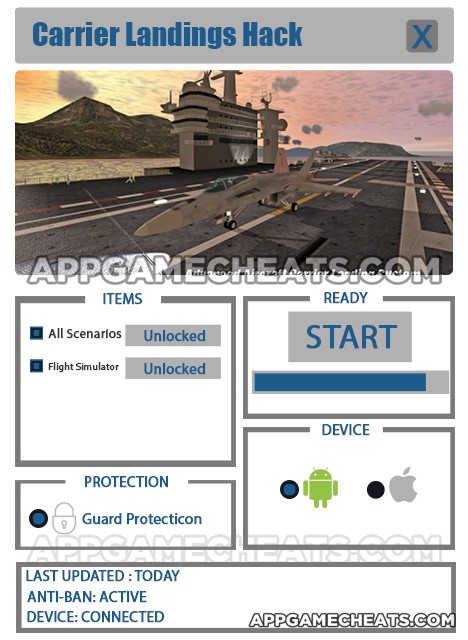
Download our Carrier Landings hack from our website. It’ll take 30 seconds for the download to finish, depending on your Internet connection. Then, you’ll need to install the hack. This is an extra 30 seconds. Make sure you select iOS or Android before starting the hack. The flight simulator & all scenarios will be set to unlock automatically.
Click the big “start” button to begin the hack. After the hack has finished, which should only take about 30 seconds, open the app on your device like normal. The scenarios and flight simulator will be ready for you to play. Enjoy!
Carrier Landings requires quite a bit of practice before you really get the hang of it. Landing an actual fighter jet that reaches top speeds of over 1,000 mph on a 150 meter aircraft carrier is an extremely difficult task that takes several years of training and instruction to master. Considering Carrier Landings tries to replicate that experience as closely as possible, you can imagine it will be quite difficult trying to compete without first completing the trainings.
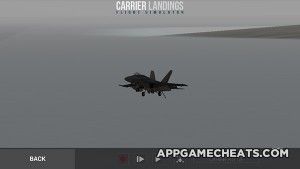
Controls are pretty basic, Carrier Landings uses your phones gyroscope to move the plane around so tilt yours backwards and forwards to tilt the plane forwards and backwards, left and right to tilt it left and right. There are on screen levers, nobs, and pulleys to control speed, acceleration, and deployment of the wheels.
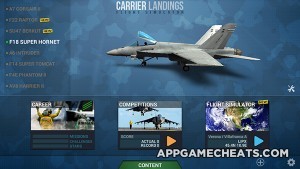
Before you begin a mission you will have the option of choosing which modes you would like to activate, depending on which modes you select these will alter what is displayed on your screen while you fly as well as the level of control you have over the plane itself. There are two options for flight mode, normal and simulation and two options for plane controls: simple and complete. Normal flight mode is very limited in its range of motion, you can move up and down but any lateral movement is severely limited, you can’t tilt the plane to do any spinning motions or to do a back flip or front flip. On the other hand, simulation mode gives you full control over the lane, you can spin, complete tight turns, do flips, etc.
Naturally, each flight mode has its benefits and its drawbacks. Normal flight mode is very easy to control and since you’re not going to be concerned with the plane tilting that makes landing very easy as all you have to do is lower the plane’s altitude. On the other hand normal flight mode is quite boring and is closer to flying a commercial jet than a fighter jet. If you’re actually looking to experience the fun side of flying a fighter jet simulation mode is where you need to go. With simulation mode you can do all of the great things that make fighter jets so cool, barrel rolls, flying the plane vertically straight up into the sky or plunging towards the earth and breakneck speed only to pull up at the last second, flying tilted to one side to squeeze between two canyons, and so on.

Of course, flying in simulation mode is much harder than normal mode and it requires quite a bit of practice before landing is mastered. Next are the plane controls, simple or complete. The controls in question are the throttle which controls engine power and subsequently overall speed, the flaps which are designed to slow the plane down for landing, the speed brake which also slows the plane down, the landing gear switch, and the two flap controls that can be used to steer the plane left and right.
If the simple plane controls option is selected then you will only see the engine throttle and the landing gear switch. However, if you select the complete controls option you will see all of them. Again, this is very similar to the flight mode options, although the simple controls make flying much easier, they are considerably less fun and they do not give the impression of a simulation.
The tutorial is in six parts and it will guide you through the usage of all of these materials as well as basic flight mechanics. Starting out I would recommend trying out all four flight options and seeing for yourself which one is most suited to your tastes, however, I would highly recommend sticking to the full controls and simulation flight settings as there are many missions which absolutely require you have complete control of the airplane to succeed. Early on you may get by with the easier setting but this will ultimately not benefit you if you hope to play Carrier Landings in the long run.
There are three game modes: career, competition, and flight simulator. Career mode has 3 challenge levels and a mandatory tutorial. Each one takes you through several mission types like recon, drop off, fast landing etc. Each mission has a set of objectives, usually a time limit, that once reached will garner you extra points and stars. Stars are needed to advance to the next level, you can get a maximum of three stars per mission. To reach level 1 no stars are required just complete the tutorial, to reach level two get 6 stars in level 1, for level 3 get six stars in level two and finally there are 6 free flight simulators you can play on. If you don’t get all of the stars you need in your first run don’t worry because you can always repeat missions.
Throughout the game you’ll notice that there are really only two landing places, airports or plane carriers. Airports are much easier to land on as you get a landing strip that is approximately 1 km as opposed to the much harder carrier whose landing strip is a measly 150m. There are several camera modes as well. The standard camera is the follow camera which shows the plane from a couple hundred meters behind, then there is the rear camera which is on the back tail of the plane. Next is the cabin camera which is inside the cabin and it allows you to see the dashboard. There is also a wing camera, a rear view camera, and finally the first person camera mounted on the very tip of the plane’s nose.
Regardless of which camera you prefer there are several heads up displays which you must always keep your eyes on. There’s the IFLOLS display, the map, the altimeter, and the speedometer. The IFLOLS display is what tells you where the horizon is, although this may seem trivial when you are flying at night and the sky and the ground are all pitch black, or if you are flying at very high altitudes it can become almost impossible to tell the sky from the sea, in these situations the IFLOLS is absolutely necessary.
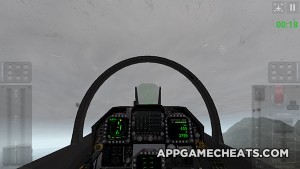
The map is important for two reasons, first of all it tell you where the landing strip is and the direction from which to approach it, and second of all it tells you your relative coordination in reference to the landing strip. If you look at the line that runs from your position to the landing strip that will tell you whether or not you are directly headed for the strip or you need to alter your positon left or right. If you miss the runway don’t worry, simply fly your plane back up and give it another try, under no circumstances should you attempt to land the plane on a non-paved surface as it will immediately explode in a ball of fire.
Next is the altimeter, the altimeter measures how high you are in feet, use the altimeter to ensure you aren’t flying too high or too low, and also to ensure that you are descending at the proper rate before reaching the landing strip. Most importantly perhaps is the speedometer, the speedometer measures your speed in knots. If you’re not familiar with knots just know that 1 not is approximately 1.151 mph, when you’re landing you want to be between 160 and 180 knots, any faster than that and you’re likely to end up blowing up the plane and having to start over.
If your plane ever goes below 150 knots it will stall out, stalling means the plane no longer has enough speed to sustain its aerial position, and thus, it will fall to the ground just like any other 20 ton hunk of steel. If you’re under 1000 feet and your plane is stalling out just accept the fact that you’re going to crash and learn from it. However, if you’re above 1000 ft you’re in luck, just stabilize the plane, kick its throttle into full speed, and balance out the wings so you begin to pick up speed. Once you reach over 160 knots you’re good to go. The best way to avoid stalling out is to constantly monitor the speedometer and to gradually reduce speed before reaching the runway.
I’m a huge fan of flight simulators and so far I’ve found Carrier Landings to be the best I’ve ever played on a mobile phone. The control I had over the plane was great to say the least, the graphics were good especially the weather changes, and there were many more controls then I’ve seen in any other flight simulator.
When I first downloaded Carrier Landings I had serious issues with the game randomly crashing all of the time. In only one hour I would have it crash 6-7 times, as you can imagine this was very frustrating and had I stopped playing there my experience with Carrier Landings would have been an unpleasant one to say the least. Nonetheless I reinstalled Carrier Landings and I’ve had virtually no glitches since then. Also the advertisements were very annoying and persistent, however, I enjoyed the game so much I made an in app purchase and I no longer had to worry about those.
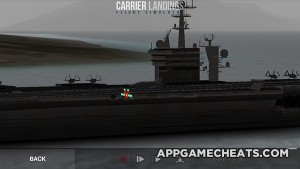
Carrier Landings is a very big file, this goes out to all of the 8 GB and 16 GB iPhone users out there, and with each purchase or map you are using up even more of your phones internal memory so make sure to keep that in mind. Also, as a powerful game it drains battery life quickly but it wasn’t too much for the A8 processor so as to cause it to heat up. I was very impressed by how quickly the games started to, there was virtually no loading times or idle time, once you clicked start you were automatically in the game and up in the air in no time.
Although the flying was very smooth in the game I would frequently have to recalibrate Carrier Landings with my gyroscope because the plane would go absolutely haywire, either flying straight up into the sky or nosediving. This is certainly something that needs to be resolved by the developers on future versions. In app purchases were very easy although they do take up a lot of space as I’ve mentioned before especially the world map with 500+ airports. Also when I made an in app purchase and deleted the game, I was able to restore my purchases free of charge when I re downloaded Carrier Landings.
Overall a great simulator with the exception of a few kinks.
Carrier Landings Ratings
Picture and display 8/10
Great graphics but clearly quality as sacrificed for loading speed, as this is a mobile game I was still impressed.
Sound/ Fx 10/10
Outside of the menu I there were no music scores during gameplay. I really enjoyed this aspect of the game as a true simulator wouldn’t put music inside of a fighter jet since no such thing exists in the real world I’d imagine. Also there was a radio walkie/talkie device that was always on and it even had commentary similar to what I’d imagine an authentic fighter jet pilot would say.
Originality 8/10
It’s one of many flight simulators but the depth of detail, the quality of the simulation, as well as the myriad of location options was absolutely novel in every sense of the word.
General Gameplay 6/10
Gameplay is fun and nearly flawless but ultimately it’s pretty much the same thing, it can get pretty boring when you’re 15 minutes into a flight and all you have to look forward to is landing. You would think that a fighter jet simulator would involve at least some of the cool things that a fighter jet was designed to do, like fight in wars. The most exciting thing in this game is taking off and landing a plane.
Addictiveness 7/10
A lot of the same things that were said about gameplay apply here as well. As far as addictiveness I just don’t see that being a huge part of the reason why people play Carrier Landings.
Overall 7.8



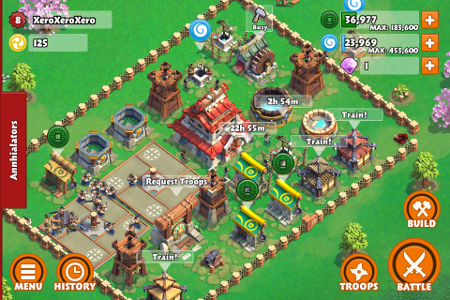
 Call of Duty: Heroes: Tips, Tricks, and Strategies to be the Finest Hero
Call of Duty: Heroes: Tips, Tricks, and Strategies to be the Finest Hero Summoners War: Sky Arena Cheats, Tips and Strategy Guide
Summoners War: Sky Arena Cheats, Tips and Strategy Guide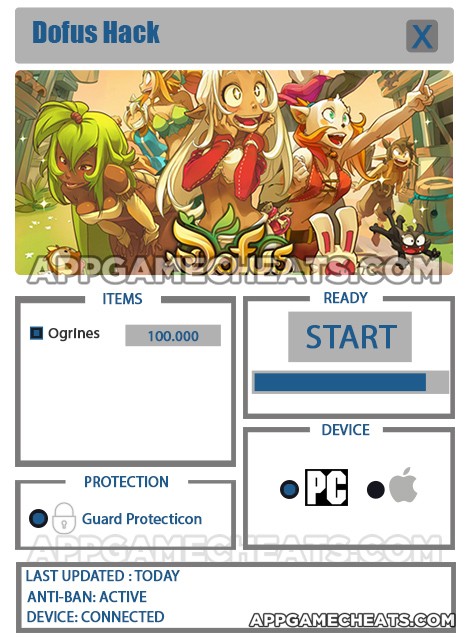 Dofus Cheats & Hack for Oringes 2016
Dofus Cheats & Hack for Oringes 2016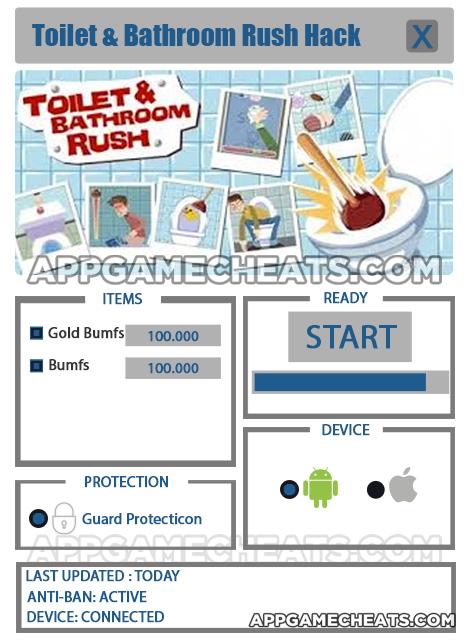 Bathroom & Toilet Rush Cheats & Hack for Bumfs & Gold Bumfs - AppGameCheats.com
Bathroom & Toilet Rush Cheats & Hack for Bumfs & Gold Bumfs - AppGameCheats.com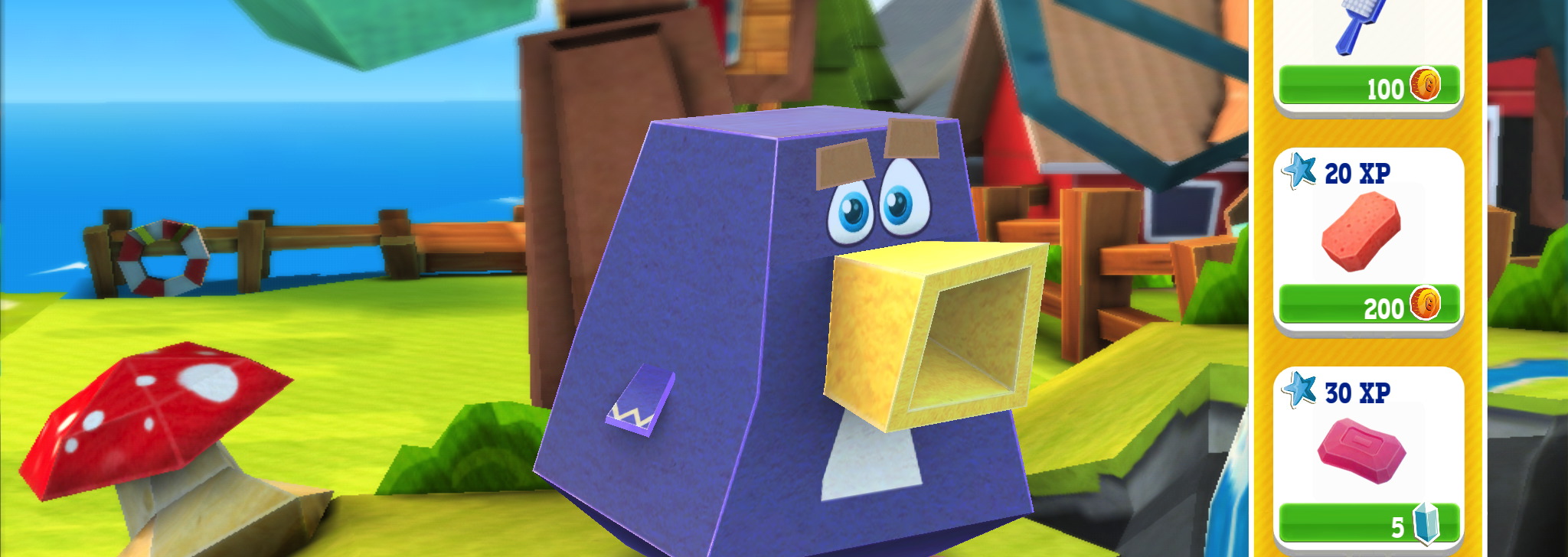 How to collect em all: Monster Life hints, tips, and tricks
How to collect em all: Monster Life hints, tips, and tricks